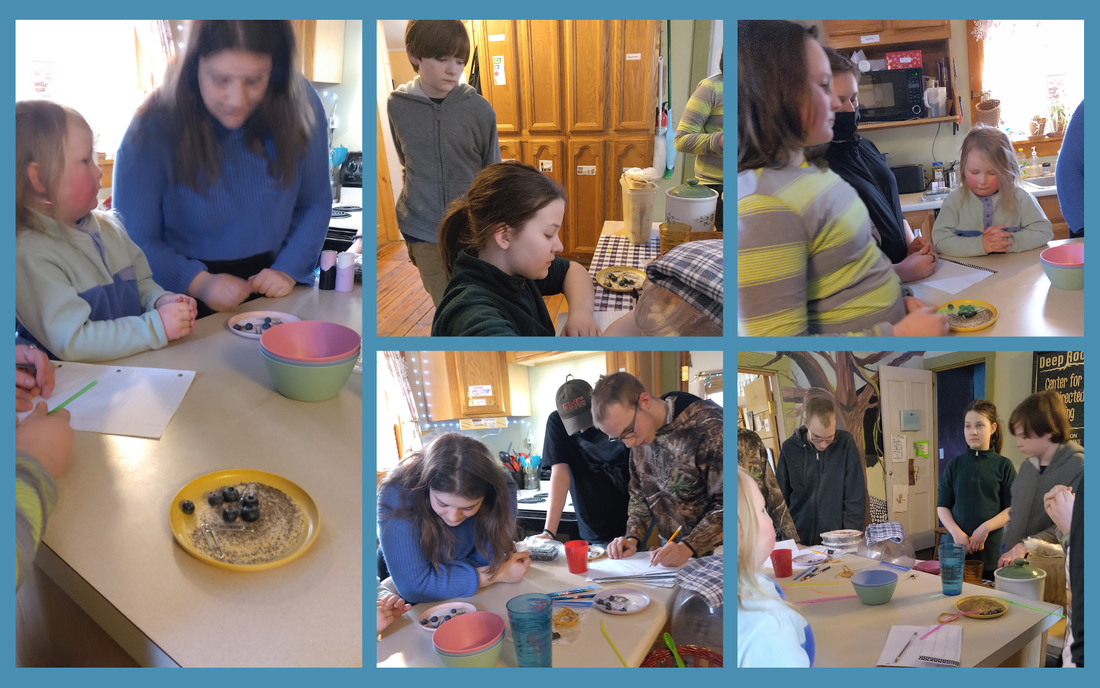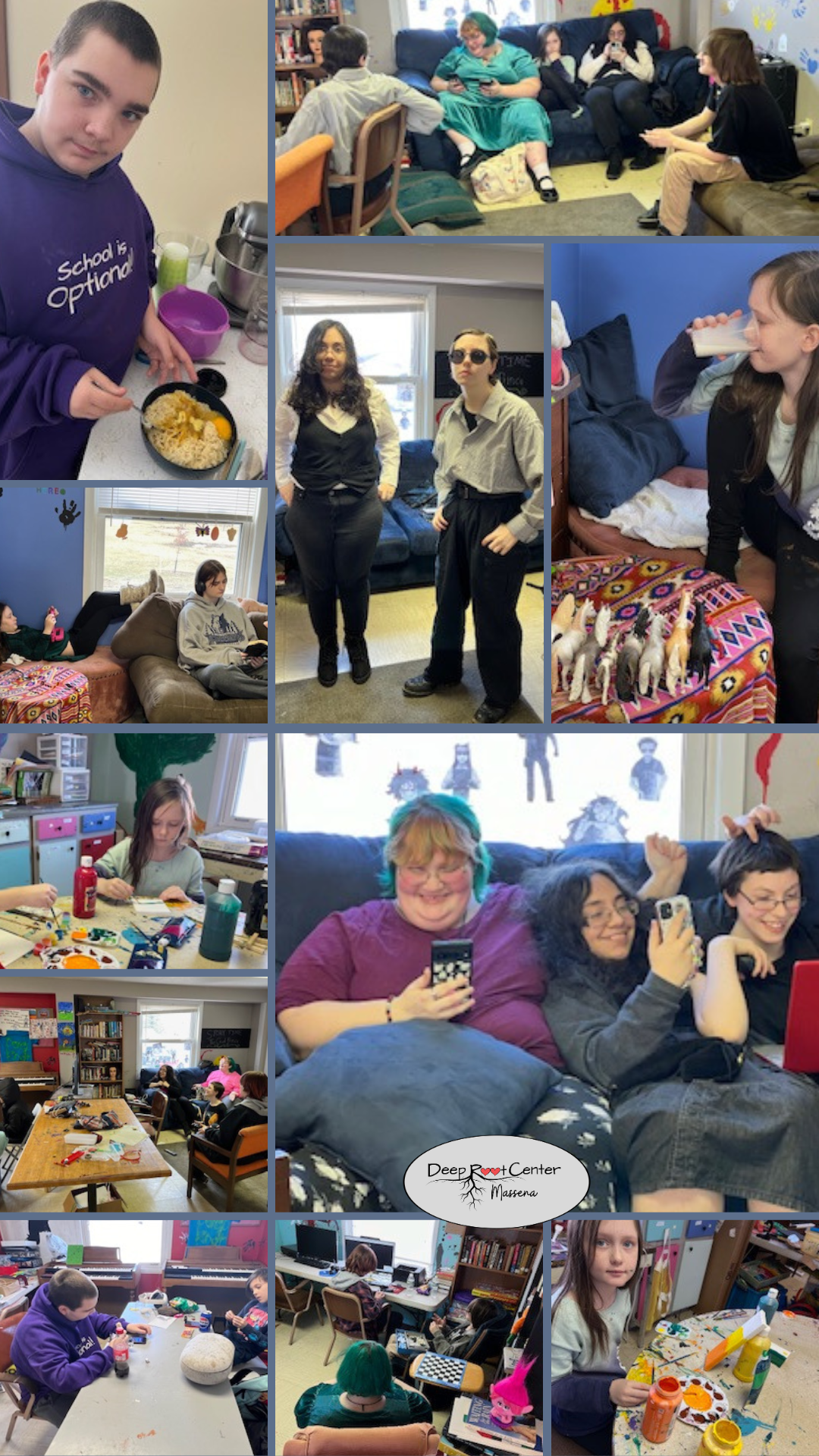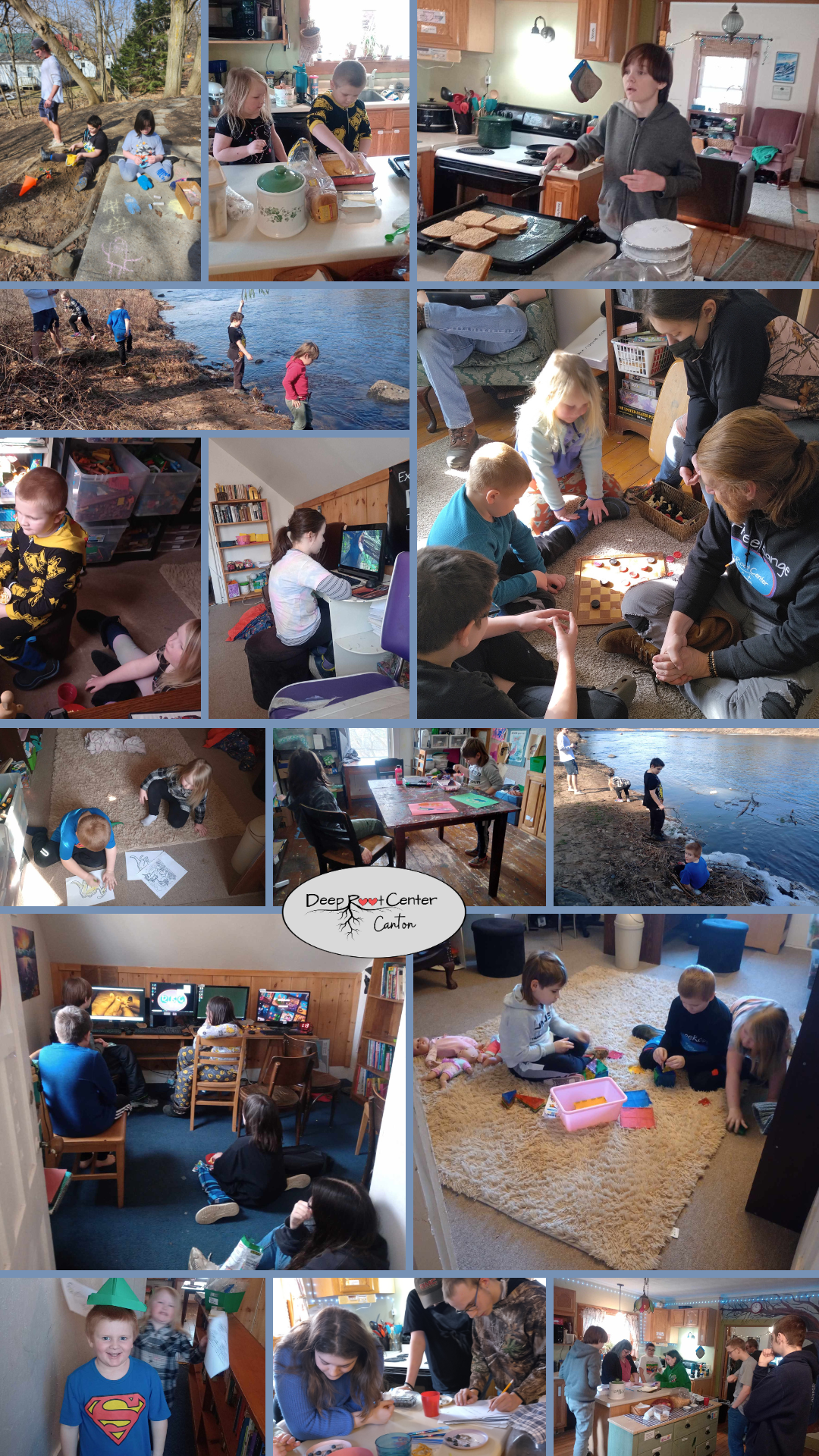|
As you may recall, "have fun" is how I end every consultation phone call. Additionally, that idea encompasses the foundational philosophy that we practice every day. Most of us intimately understand that having fun and exploring new things in a playful manner are the catalysts for creativity and innovation, while perceived fear, frustration, intimidation, and coercion shut them down. However, that concept is rarely carried through to our educational or work life - the two places we arguably need to be on top of our creative and innovative game. At DRC-Canton on Friday, we had a clear example of this in practice. E, our excellent SLU volunteer, often has a fun Kitchen Sink Science activity for us - this week was no exception. The kids are always excited to see what she brings them. This time, she had them split into teams - each had a plate with a few blueberries, a couple of paperclips, and salt and pepper. The challenge was to remove everything from the plate separately without using their hands to touch the items on the plate. They could use anything else to move them - straws, magnets, or whatever they could imagine. The kicker was that they had to think about it and write instructions before completing the task. E was clear on that instruction. And not surprisingly, that was the most difficult part of the entire activity for many. They wanted to jump in and play with their ideas and had zero interest in planning or writing it all down. Some ignored her instructions and went ahead and experimented without drafting a strategy. Others tried to follow the rules - but had trouble articulating their ideas without first playing and exploring. While listening in from my desk, I tried to explain to the kids that E wanted them to write their plan down so it could be replicated - one of the basic tenets of science. But they were still feeling frustrated with that part. A few kids did figure out the steps to accomplish the challenge. But the written part was definitely sketchy at best. When I checked in with E while she was cleaning up, I observed that the exercise most definitely served to reveal everyone's personality pretty quickly. Their responses ranged from deep frustration, nonchalance, to determination - one kid was actually separating each piece of salt and pepper methodically with a straw, another was convinced that water was the answer and mostly got it to work. She replied that she had no idea that a couple of kids would straight-up "rage quit." I think she learned something from the experience - too. I was pondering all this early Saturday morning - thinking maybe if they were allowed to document the instructions while playing and creating, that would have made a difference for the kids who were most frustrated with the activity and still keep the scientific integrity that E was trying to teach. Then, I received Peter Gray's latest blog. And as often happens - his words directly related to everything I was trying to puzzle out. (I even sent it to E - as one more resource to think about.) Therefore, I'll leave you to peruse his clear and concise essay (linked below) instead of attempting to wrangle and untangle these same ideas that are randomly bumping against each other inside my head - into something readable. Enjoy! ( PS - I highly recommend subscribing to Dr. Gray's Substack.)  DRC News
There was some crazy energy out there this past week. We captured some of it in this week's photos.
0 Comments
Your comment will be posted after it is approved.
Leave a Reply. |
|
© 2024 Whole Learners, Inc. 501(c)3
Deep Root Center
48 Riverside Drive, Canton, NY 13617
315*323*1435/[email protected]
Deep Root Center
48 Riverside Drive, Canton, NY 13617
315*323*1435/[email protected]






